Have you ever visited an online store, looked at a product, then left without making a purchase? Then you receive an email from that store with the product you were looking at, encouraging you to complete your purchase. That’s a type of email retargeting!
In this article, we’ll dive into email retargeting: how it works, why it’s important, when to use it, best practices, and how to implement it into your email marketing strategy.
- What Is Email Retargeting?
- How Does Email Retargeting Work?
- Why Is Email Retargeting Important?
- When Should You Use Email Retargeting?
- 1. To Retarget Customers With Abandoned Carts
- 2. Cross-Sell and Upsell
- 3. Retarget Website Visitors
- 4. Replenishment Update
- 5. Recommend Related Products for Existing Customers
- 6. Re-engage Inactive Customers
- Email Retargeting Best Practices
- Email List Hygiene
- Segment Your Email List
- Write Great Email Content
- Deep Personalization
- Pay Attention to the Visuals
- Draw Customers/Prospects Through Incentives
- Use Automation Tools
- Retarget at the Right Time
- How to Start Email Retargeting
What Is Email Retargeting?
Email retargeting is a marketing strategy that involves sending targeted emails to potential customers who have already shown interest in a product or service.
This interest can be expressed in various ways, such as browsing a website, adding items to a cart, or signing up for a newsletter.
The email retargeting strategy aims to bring these potential customers back to your website and encourage them to take action, such as making a purchase or signing up for your service.
Read also: Best Email Drip Campaign Examples
How Does Email Retargeting Work?
Email retargeting works by tracking the behavior of website visitors and using that data to create targeted email campaigns.
When a visitor performs an action on the website, the website will track that action and store it in a database. The website can then use that data to send targeted emails to visitors based on their behavior.
Suppose a website visitor adds a product to their cart but doesn’t complete the purchase. In that case, the website can send an email reminding visitors of the product they were interested in and encouraging them to complete the purchase.
The retargeting email can also include similar products that the visitor may be interested in based on their previous behavior on the website.
Why Is Email Retargeting Important?
Email retargeting is important for several reasons.
First, it can help improve your sales by targeting potential customers who have already shown interest in your products or services. By sending targeted emails, you can encourage these potential customers to return to your website and complete a purchase.
Second, email retargeting can help you build brand awareness and loyalty. By sending personalized emails, you can create a more personal connection with potential customers and show them that you value their business. This can lead to repeat purchases and increased customer loyalty.
Finally, email retargeting is a cost-effective marketing strategy. When you retarget potential customers who have already shown interest in your product or service, you can focus your marketing efforts on those more likely to convert. This can reduce your costs and result in a higher return on investment.
Here’re some statistics that further underscore the importance of email retargeting:
- Emails sent to retargeted customers have an open rate of 57%, compared to the average open rate of 21% for traditional email campaigns.
- On average, abandoned cart emails have a 45% open rate and a 21% click-through rate.
- Personalized emails generate six times higher revenue than non-personalized emails.
- Retargeting email campaigns can result in a 150% increase in conversion rates.
When Should You Use Email Retargeting?
Email retargeting can be used in a variety of situations. Here are some examples:
1. To Retarget Customers With Abandoned Carts
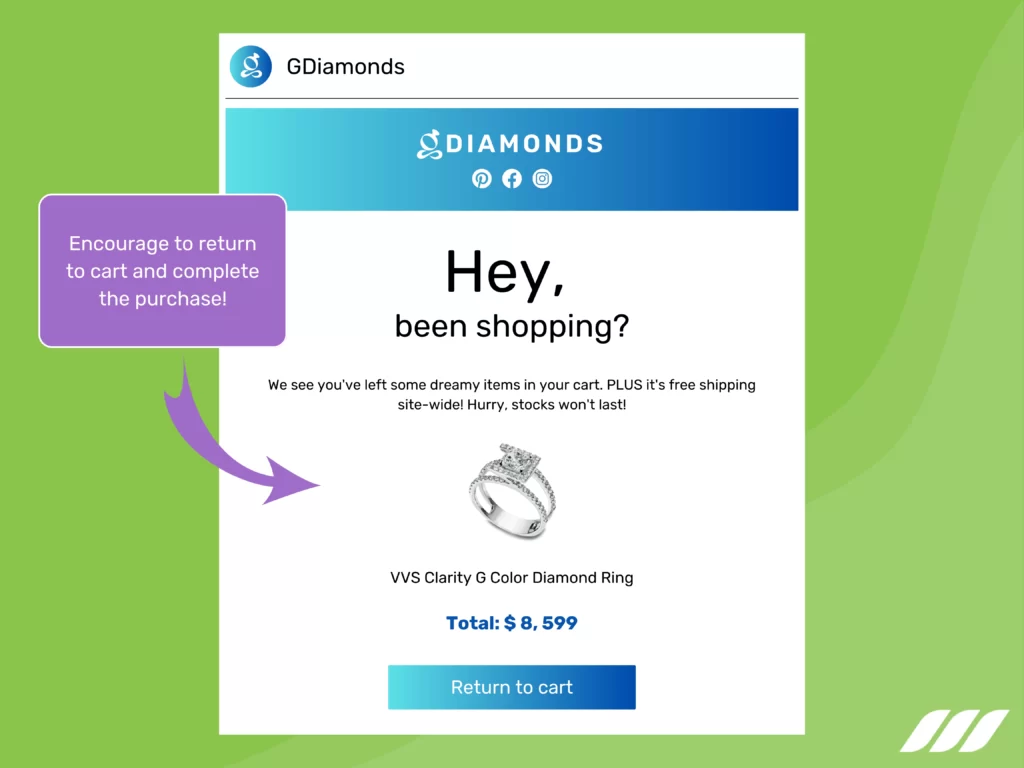
One of the most common uses of email retargeting is to target customers who have abandoned their shopping carts.
Studies have shown that nearly 70% of online shoppers abandon their carts before completing a purchase. This represents a significant loss in potential revenue for businesses.
The good news is that by retargeting these customers through email, you can encourage them to return to their carts and complete their purchases.
To retarget customers with abandoned carts, you can send a series of product retargeting emails reminding them of the items they left behind and incentivizing them to return to their cart and complete their purchase.
These emails can include information about the products the customer left in their cart, images of the products, and a call to action that encourages them to return to their cart and complete their purchase.
2. Cross-Sell and Upsell
It is a good idea to use email retargeting to cross-sell and upsell to existing customers. This strategy can increase the average order value and encourage customers to return for future purchases.
Cross-selling involves recommending related products to a customer who has already made a purchase. In contrast, upselling involves recommending a more expensive or upgraded version of a product they have already purchased.
In doing so, it is essential to segment your email list to target customers based on their purchase history and preferences. Plus, it is good to provide personalized recommendations that are relevant to their interests.
Moreover, you should use clear calls to action and provide incentives to encourage customers to make additional purchases.
3. Retarget Website Visitors
You can use email retargeting to target website visitors who have not made a purchase or added anything to the cart. Or maybe they took another desired action on the website that indicated their interest in your product or service.
By segmenting the email list based on website behavior and providing personalized content, you can improve the relevance and effectiveness of your retargeting email campaign. Doing so will ultimately improve your sales and conversion rates.
Related article: Email Personalization Strategies
4. Replenishment Update
If a customer has purchased a product that needs to be replenished regularly, email retargeting can be used to remind them to purchase more. This is especially useful for businesses that sell products that require regular replenishment, such as beauty or health products.
By sending timely reminders and updates about when to reorder a product, you can increase the likelihood that customers will return to make a purchase. This will help improve your bottom line and retain customers.
These emails should be personalized based on the customer’s purchase history and preferences. Also, they should include a clear call to action that encourages the customer to make a repeat purchase.
5. Recommend Related Products for Existing Customers

This strategy is an effective way to increase customer lifetime value and drive repeat purchases. First, you’ll need to analyze your existing customers’ purchase history and preferences. And then, you can send them personalized product recommendations that are relevant and tailored to their interests.
The recommendations sent through a retargeting email campaign can include special offers and incentives to encourage customers to make a purchase. You can build loyalty and trust by providing a seamless and personalized shopping experience for existing customers, ultimately improving your sales and revenue.
6. Re-engage Inactive Customers
Are you concerned about your customers becoming inactive? Consider sending them retargeting emails. Yes, you can use retargeting emails to re-engage lost customers who have been inactive for a certain period of time. By sending targeted emails that offer special promotions or incentives, businesses can encourage inactive customers to return and make a purchase.
It is also a good idea to use retargeting emails to solicit feedback and gain insights into why customers have become inactive. You can then use this feedback to improve your products, services, and overall customer experience.
Email Retargeting Best Practices
To get the most out of your email retargeting campaigns, it’s important to follow some best practices. Here are some tips to help you get started:
Email List Hygiene
Clean up your email list from inactive and unengaged email addresses. This will reduce your email list size, which can lead to cost savings. Reviving emails and having a clean and healthy email list can improve your ROI, increase engagement, and avoid damaging your sender reputation.
Segment Your Email List
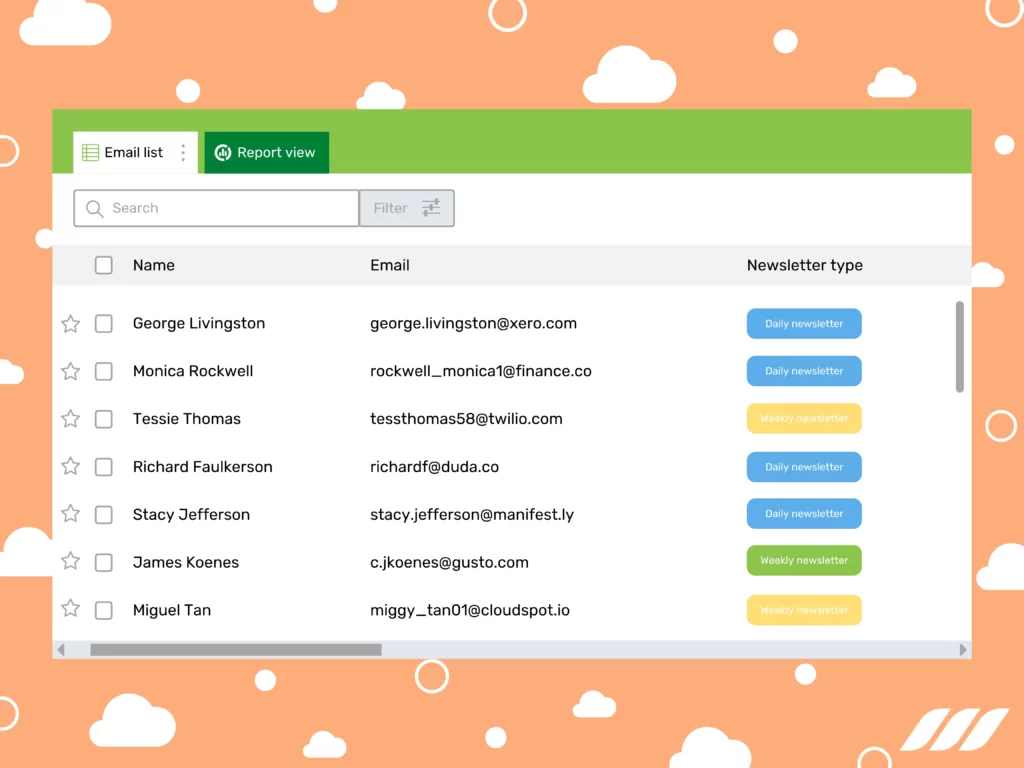
When you segment your email list, you can target customers based on their behavior, interests, and preferences. This will allow you to create targeted and personalized campaigns that are more likely to be effective. Plus, it ensures your emails are relevant to each customer, which can help to improve your open and click-through rates.
Write Great Email Content
The content of your retargeting emails is crucial to their success. Your emails should be engaging and informative and provide value to the customer. Always use clear and concise language, and ensure your emails are visually appealing and easy to read. Also, write concise subject lines and ensure the email’s body is easy to read.
Deep Personalization
Deep personalization is key to the success of your email retargeting campaigns. As such, you can use the customer’s name and other relevant information to personalize your emails. Plus, consider using dynamic content to show relevant products, offers, and promotions based on the customer’s behavior and preferences.
Pay Attention to the Visuals
The visual elements of your emails are just as crucial as the written content, so make sure the visuals in your emails are eye-catching and high-quality. You can use high-quality images and graphics to showcase your products and make your emails visually appealing. Also, ensure that the images are relevant to the recipient’s interests and optimized for mobile devices.
Draw Customers/Prospects Through Incentives
Providing incentives such as discounts, free shipping, and other promotions can be a powerful way to encourage customers to make a purchase. You can use these incentives strategically in your email retargeting campaigns to encourage customers to take action.
Use Automation Tools
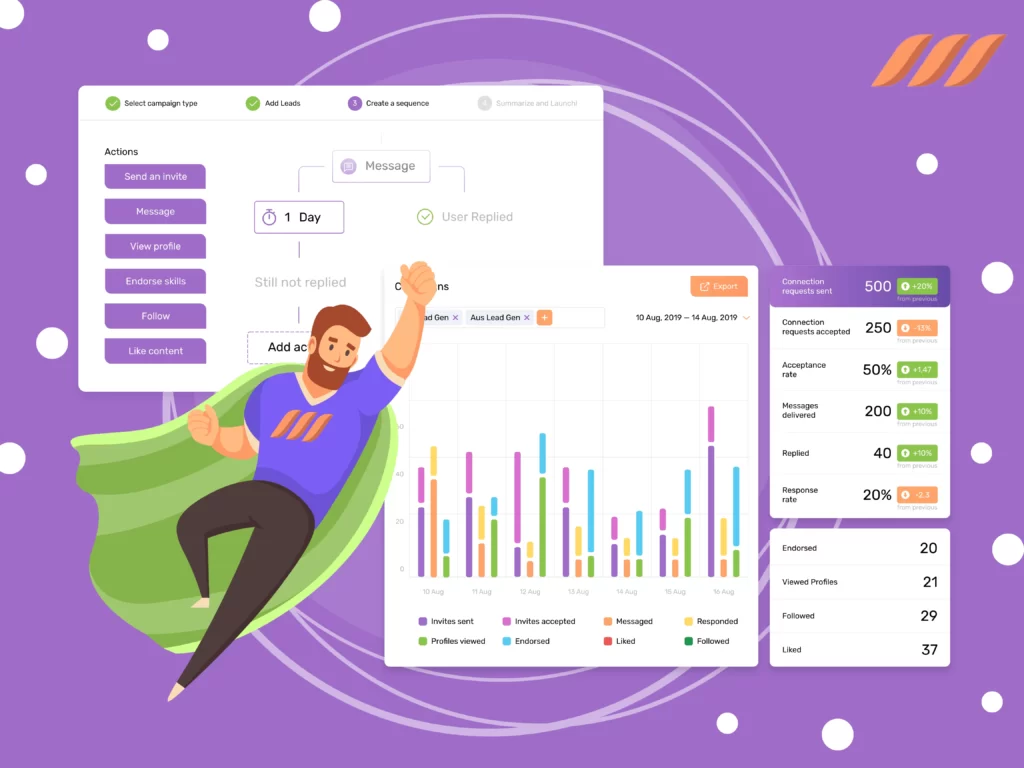
Email retargeting campaigns can be time-consuming to set up and manage. Thankfully, many top email automation tools available that can help you streamline the process.
The tools, like Dripify sales automation software can help you to automate your email campaigns, track customer behavior, and provide insights that can help you to improve your campaigns.
For example, if you’re into B2B marketing and want to retarget your potential or existing clients through LinkedIn, you can use LinkedIn automation tools to achieve your goals. The best LinkedIn automation tools allow you to put many LinkedIn activities on autopilot. It also allows you to retarget your customers by creating effective drip campaigns.
Retarget at the Right Time
Timing is key when it comes to email retargeting. Ensure you are retargeting customers at the right time, such as when they have abandoned their shopping cart or are due to replenish a product. Also, do not send too many emails to customers, as this can be annoying and lead to unsubscribes.
How to Start Email Retargeting
If you’re new to email retargeting, it can seem daunting to get started. Here are some steps you can follow to implement email retargeting into your email marketing strategy:
Build Your Email List: The first step to implementing email retargeting is to build your email list. You can offer incentives such as discounts or exclusive content in exchange for email signups on your website or social media channels.
Plan Your Email Sequences: Once you have built and segmented your email list, you must plan your email sequences. This involves deciding what types of emails you will send, when you will send them, and to whom you will send them.
For example, you may want to send a series of emails to customers who have abandoned their shopping cart, reminding them of the items they left behind and offering incentives to complete the purchase.
Create Your Emails: Once you have planned your email sequences, it’s time to create your emails. Your emails should be engaging, informative, and visually appealing. Make sure that your emails provide value to the customer, whether it’s through promotions, product recommendations, or informative content.
A/B Test and Launch: Before you send your emails to your entire email list, it’s a good idea to test them using A/B testing. This involves sending two versions of an email to a small subset of your email list and measuring which version performs better.
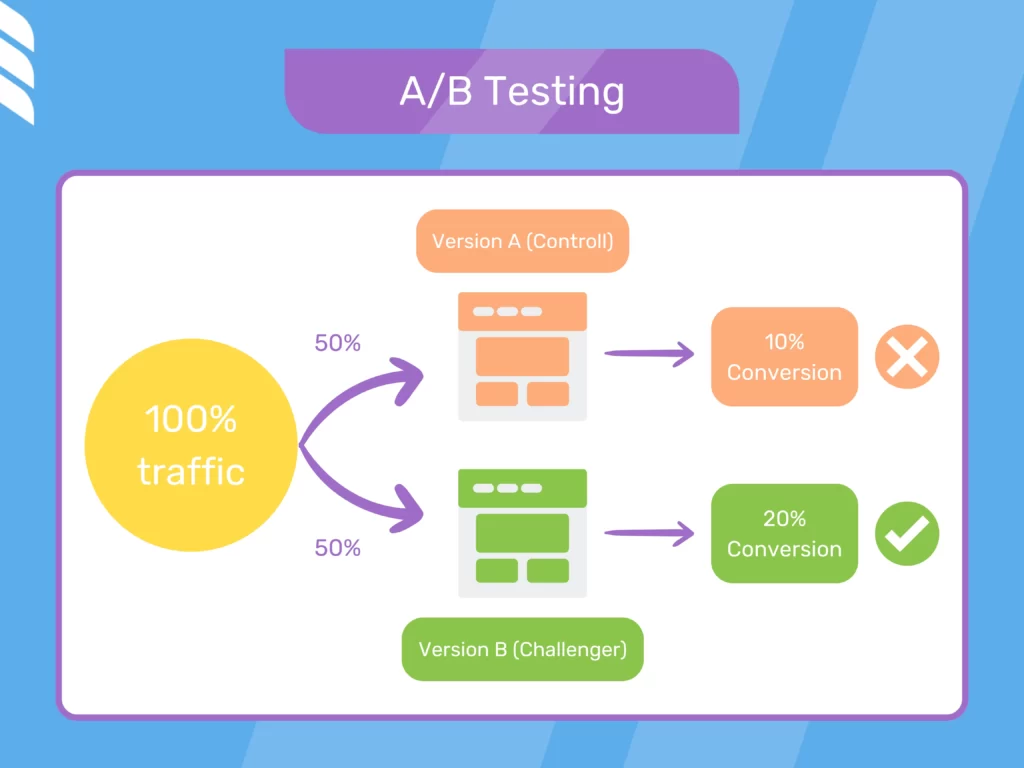
Once you have identified the best-performing version, you can launch your email retargeting campaign and send your emails to your entire list.
Send emails at the right time and to the right customers based on their behavior and preferences. Use automation tools to help you manage your email campaigns and track customer behavior.
By following these email retargeting steps, you can successfully implement email retargeting into your marketing strategy and start improving your sales and revenue. It may take some time to get it right, but with persistence and experimentation, you can find the right email retargeting strategies for your business.
Conclusion
It’s no secret that email retargeting is a powerful marketing strategy that can help improve sales, build brand awareness and loyalty, and increase return on investment. By following best practices and implementing email retargeting into your email marketing strategy, you can reach potential customers who have already shown interest in your products or services and encourage them to take action.
Whether you’re a small business or a large corporation, email retargeting can help you reach your marketing goals and grow your business.

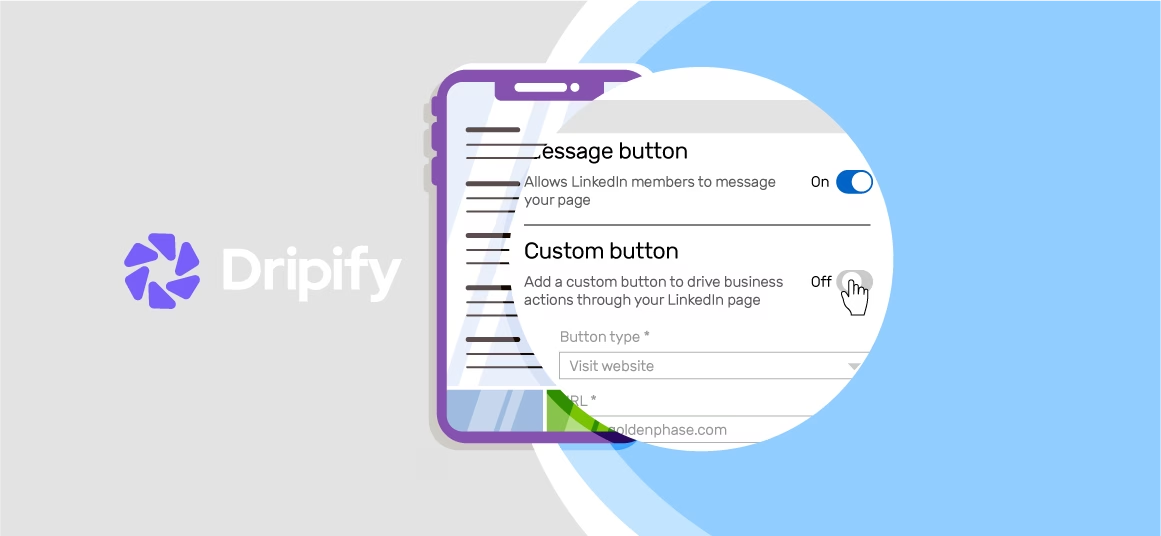
![Email Outreach Tracking [Tips, Tricks and Tools]](https://dripify.io/wp-content/uploads/2025/02/11-7-png.avif)
![Create a Prospecting Plan [+8 Prospecting Methods]](https://dripify.io/wp-content/uploads/2025/02/11-png.avif)